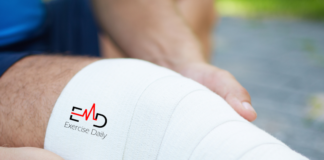Exercise Daily _ Best Ways To Encourage Daily Movement For Challenged Youth Programs
Encouraging daily movement among youth, particularly those facing challenges, is a pressing concern for educators, parents, and community leaders alike. Engaging youth in regular physical activity has been shown to foster not only physical health but also emotional well-being and academic performance. However, misconceptions about the nature of youth engagement and effective strategies often hinder progress. This article explores the best ways to encourage daily movement for challenged youth programs, grounded in evidence-based practices and counterarguments.
The Importance of Daily Movement for Youth
Daily movement is crucial for youth development. According to the World Health Organization (WHO), physical activity is essential for the physical and mental health of children and adolescents. Regular movement helps combat obesity, reduces anxiety, and improves overall mood (World Health Organization, 2020). Moreover, active children are more likely to become active adults, establishing lifelong habits that promote wellness.
Understanding the Barriers
Before implementing solutions, it is vital to understand the barriers that challenged youth face regarding physical activity. Here are some common obstacles:
- Access to Resources: Many challenged youth lack access to safe play areas or organized sports.
- Motivational Issues: Low self-esteem and fear of judgment can deter participation.
- Physical Limitations: Some youth may have disabilities that make traditional activities difficult.
- Socioeconomic Factors: Financial constraints can limit access to programs and equipment.
These barriers necessitate tailored approaches to encourage daily movement effectively.
Best Practices for Encouraging Daily Movement
To successfully promote daily movement in challenged youth programs, consider the following evidence-informed strategies:
1. Create Inclusive Environments
Inclusivity is paramount. Programs should be designed to accommodate all abilities, ensuring that every child feels welcome. Research shows that inclusive environments foster participation and enhance self-esteem (Sherrill, 2004). Here’s how to create an inclusive atmosphere:
- Train staff to understand and embrace diversity.
- Provide adaptive equipment and modified activities.
- Encourage peer support and teamwork.
By fostering an inclusive environment, programs can effectively engage youth who might otherwise feel alienated.
2. Focus on Fun and Engagement
Traditionally, physical activity has been viewed through the lens of structured sports or rigorous exercise. However, for challenged youth, fun is a critical component. Programs should prioritize enjoyable activities that promote movement without the pressure of competition. According to a study published in the Journal of Physical Activity and Health, enjoyment is a significant predictor of long-term physical activity adherence (Kowalski et al., 2012).
Activities such as dance, obstacle courses, and games can spark interest and encourage participation. Here are some ideas:
- Host dance-offs or Zumba sessions.
- Organize scavenger hunts that require movement.
- Incorporate technology, like interactive video games that promote physical activity.
3. Set Realistic Goals
Setting achievable goals is essential for fostering a sense of accomplishment. Programs should work with youth to establish personal movement goals tailored to their abilities. Research indicates that goal-setting can significantly enhance motivation and performance (Locke & Latham, 2002). Encourage youth to track their progress and celebrate their achievements regularly.
4. Leverage Community Resources
Community partnerships can enhance program effectiveness. Collaborating with local organizations can provide additional resources, expertise, and opportunities for youth. For instance, local gyms or sports clubs may offer free workshops or classes for challenged youth. Additionally, community events can serve as platforms for showcasing youth achievements and encouraging further participation.
5. Educate on the Benefits of Movement
Education plays a crucial role in changing perceptions about physical activity. Programs should incorporate educational components that inform youth about the physical and mental benefits of daily movement. Understanding how exercise impacts their bodies and minds can motivate youth to engage more consistently. For example, discussions about how exercise can improve mood and reduce anxiety can resonate with youth experiencing emotional challenges.
6. Incorporate Technology
In today’s digital age, technology can be a powerful tool for encouraging movement. Mobile apps and wearable technology can track activity levels, set reminders for movement, and even provide virtual challenges. Research from the National Institutes of Health suggests that technology can enhance engagement and motivation in physical activities (NIH, 2021).
Consider implementing technology in the following ways:
- Use fitness apps that gamify movement.
- Host virtual fitness challenges that promote friendly competition.
- Incorporate social media to share achievements and foster community.
7. Engage Parents and Caregivers
Involving parents and caregivers in movement programs can enhance youth participation. When families are engaged, youth are more likely to adopt active lifestyles. Programs can offer family fitness nights, workshops on the importance of movement, and resources for parents to encourage physical activity at home. A study published in the American Journal of Preventive Medicine found that family involvement significantly increases physical activity levels among children (Sallis et al., 2000).
Counterarguments: What Most People Get Wrong
Despite the clear benefits of encouraging daily movement, several misconceptions persist regarding youth programs:
1. One Size Fits All
Many believe that a single approach to physical activity will work for all youth. This perspective overlooks the diverse needs of challenged youth. Programs must be adaptable and responsive to individual differences in abilities, interests, and backgrounds.
2. Movement Equals Competition
Another common misconception is that physical activity must be competitive to be effective. This belief can alienate youth who are less inclined towards competition. Emphasizing fun and personal achievement rather than competition can lead to better engagement and participation.
3. Lack of Immediate Results
Some educators and parents may expect immediate results from movement programs. However, building a culture of movement takes time. Patience and consistency are essential for fostering lasting habits among youth.
Real-World Examples
Several programs have successfully implemented these strategies, yielding impressive results:
“We transformed our youth program by focusing on inclusivity and fun. The kids are more engaged than ever, and the positive feedback from parents has been overwhelming.” – Program Director, Local Community Center
Recipe for Success: A Movement Snack
To complement daily movement, nutrition plays a crucial role. Here’s a simple, healthy recipe that can energize youth before or after physical activity:

Nut Butter Energy Bites
Ingredients:
- 1 cup rolled oats
- 1/2 cup nut butter (peanut, almond, or sunflower)
- 1/3 cup honey or maple syrup
- 1/4 cup chocolate chips or dried fruit
- 1/2 tsp vanilla extract
Instructions:
- In a bowl, mix all ingredients until well combined.
- Roll into small balls and place on a baking sheet.
- Chill in the fridge for about 30 minutes before serving.
These energy bites are perfect for fueling movement and can be made in advance for easy access.
Conclusion
Encouraging daily movement in challenged youth programs requires a multifaceted approach that prioritizes inclusivity, enjoyment, and education. By understanding barriers and implementing evidence-based strategies, we can foster a culture of movement that benefits all youth. The misconception that one approach fits all must be dispelled, and we must recognize the unique needs of each individual. By embracing these best practices, we can ensure that every young person has the opportunity to thrive through daily movement.
For more information on exercise, consider exploring our resources on exercise, fitness, and nutrition.
- Sherrill, C. (2004). Adapted Physical Activity Quarterly.
- Kowalski, K., et al. (2012). Journal of Physical Activity and Health.
- Locke, E. A., & Latham, G. P. (2002). American Psychologist.
- Sallis, J. F., et al. (2000). American Journal of Preventive Medicine.
- NIH (2021). National Institutes of Health.
- World Health Organization (2020). Physical Activity Fact Sheet.
These are for informational purposes only. Consult your doctor and do your own research before use.
Eat daily, sleep daily, exercise daily.
“`These are for informational purposes only. Consult your doctor and do your own research before use.



